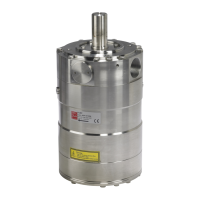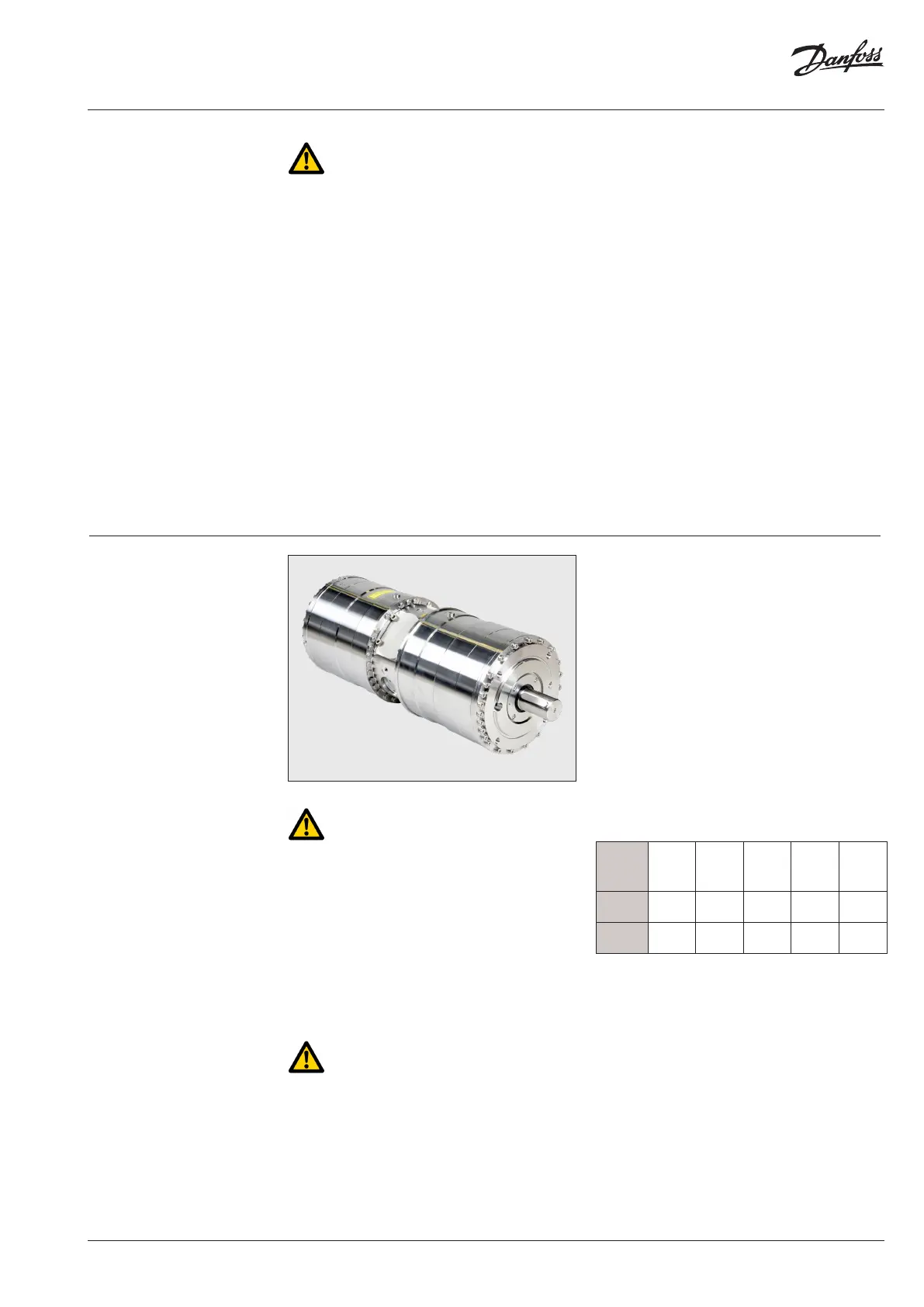180R9346 | AQ240486503020en-001702 | 7© Danfoss | 2023.03
Operation guide Installation, Operation and Maintenance APP 53-92 pumps
3.1 Approved applications and operational
limits for the pumps
The pump and the pump units are designed for
the use in a Sea Water Reverse Osmosis (SWRO)
or Brackish Water Reverse Osmosis (BWRO)
systems.
The APP pumps must not be used for other
purposes than those recommended and
specied without rst consulting your local
pump distributor.
Use of the pump in other applications not
suitable for the pump unit can cause damages
to the pump unit, with risk of personal injury.
For system integration of the pump, please see
appendix 1, Data sheet and appendix 2,
Instruction.
3. Technical data
3.2 Application range
The Danfoss range of APP high-pressure pumps
is designed according to EN 809 for use in RO
applications with low viscosity and corrosive
uids such as sea water.
3.3 Electric motor data
See recommended motor in appendix 1, Data
sheet or appendix 3, IOM for motors. The motors
mentioned are the most common used motors
by Danfoss High Pressure Pumps.
3.4 VFD and Direct on line
Danfoss APP pumps can be used with VFD and
direct on line.
Torque limits can be found in the table below:
Nm APP
53
APP
65
APP
78
APP
86
APP
92
MAWT 878 1,118 1,257 1,112 1,112
MAST 1,700 1,700 1,700 1,700 1,700
MAWT: Maximum allowable working torque
MAST: Maximum allowable starting torque
3.5 Noise and vibration
Noise level for a pump unit with a ”standard”
motor measured according to EN ISO 3744: 2010,
see appendix 1, Data sheet. Possibilities to
reduce noise and vibration are described in the
same Data sheet.
3.6 Dimension drawings
Dimensions of the dierent pumps can be found
in appendix 1, Data sheet.
It is always the system builder´s responsibility
that the system design does not cause any kind
of hazard and is adapted to local regulations and
standards.
Proper installation, proper start up and shut-
down devices as well as high-pressure protection
equipment is essential.
2.3 Commissioning and servicing the unit
It is recommended that commissioning and
servicing are carried out by a minimum of two
people, where one is acting as a supervisor.
2.4 Adhere to the following important
points
• Before using the pump/pump unit it is very
important to read and understand this user
manual.
• Do not try to lift the pump unit manually;
most of the pumps weigh more than
20 kilos, see specic weight for the pump
in the appendix 1, Data sheet.
• Always bleed the pump prior to initial
start-up.
• Do not mount the pump without the bell
housing and a exible coupling.
• Do not try to start the unit before the
system components are mounted, bleeded
and adjusted.
• Flush the system throughly before
connecting the pump or pump unit.
• Check rotation direction of the motor
before mounting the pump.
2.5 In case of doubt
Please contact Danfoss A/S in case of doubt.
Contact information is listed in section 1.3,
Manufacturer and customer service address.

